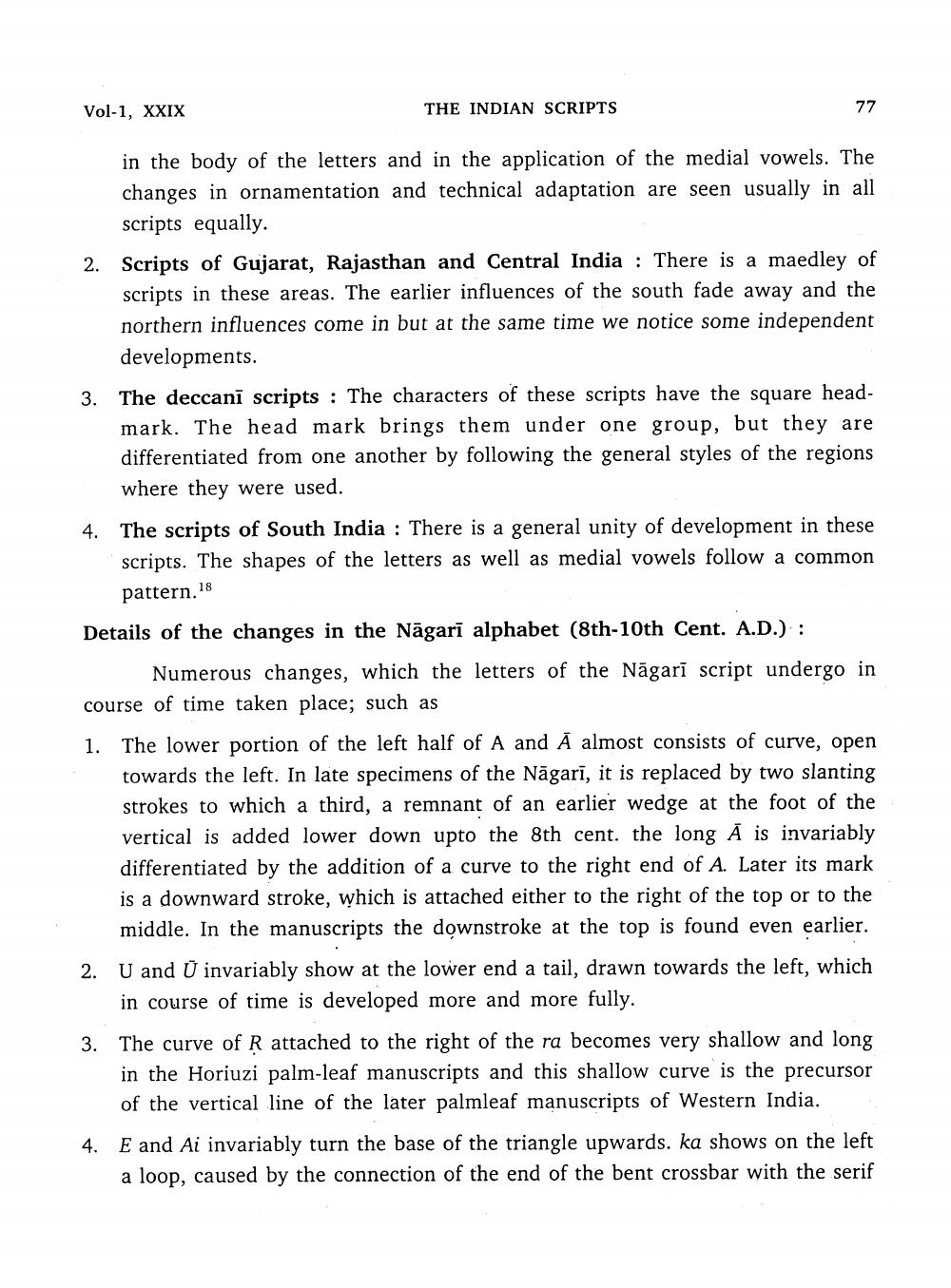________________
Vol-1, XXIX
THE INDIAN SCRIPTS
in the body of the letters and in the application of the medial vowels. The changes in ornamentation and technical adaptation are seen usually in all scripts equally. Scripts of Gujarat, Rajasthan and Central India : There is a maedley of scripts in these areas. The earlier influences of the south fade away and the northern influences come in but at the same time we notice some independent developments.
3. The deccanī scripts : The characters of these scripts have the square head
mark. The head mark brings them under one group, but they are differentiated from one another by following the general styles of the regions where they were used.
4. The scripts of South India : There is a general unity of development in these
scripts. The shapes of the letters as well as medial vowels follow a common
pattern. 18
Details of the changes in the Nāgarī alphabet (8th-10th Cent. A.D.) :
Numerous changes, which the letters of the Nāgarī script undergo in course of time taken place; such as
1. The lower portion of the left half of A and A almost consists of curve, open
towards the left. In late specimens of the Nāgarī, it is replaced by two slanting strokes to which a third, a remnant of an earlier wedge at the foot of the vertical is added lower down upto the 8th cent. the long ) is invariably differentiated by the addition of a curve to the right end of A. Later its mark is a downward stroke, which is attached either to the right of the top or to the
middle. In the manuscripts the downstroke at the top is found even earlier. 2. U and Ū invariably show at the lower end a tail, drawn towards the left, which
in course of time is developed more and more fully.
3. The curve of R attached to the right of the ra becomes very shallow and long
in the Horiuzi palm-leaf manuscripts and this shallow curve is the precursor of the vertical line of the later palmleaf manuscripts of Western India.
4. E and Ai invariably turn the base of the triangle upwards. ka shows on the left
a loop, caused by the connection of the end of the bent crossbar with the serif




